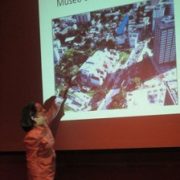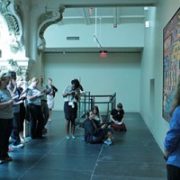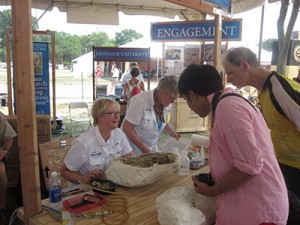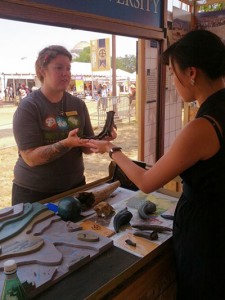Special thanks to our Smithsonian Affiliations summer interns Lisa Hung (University of California, Irvine) and Neema Amadala (University of Calgary) for participating in the Smithsonian’s EdLab Teacher workshops in order to share their experiences with us. This is the third of four guest posts in their “Teaching in a 21st Century Classroom” series.
Beyond the Walls of the Classroom: Mission Accomplished
By Lisa Hung
Eyes glued to the ground, trying to make her way to the metro without stopping, and occasionally glancing up to verify her surroundings she barely catches glimpses and snapshots of her fast-paced life. At what point do we slow down? It seems that this walk to the metro and the texting in class has become a microcosm for the way many people depict our society to be – distracted, single track minded, and driven by our technology and need to get from point A to B. We end up focusing more on our destination as opposed to our journey, what do we miss when we overlook our surroundings, or more importantly, our community?

The brochure from one of the groups’ presentation.
Day three of EdLab’s workshop required the attendees to step outside of their comfort zones and in 100 degree heat – and we did just that. Art can be a participant in and even a catalyst for conversations about conflicts. Our mission was to design a catalyst that illuminated a local conflict by going into the streets of DC, identifying a need or a problem in the community and developing a plan for how we will get people to care about and work to solve these problems. Being a native of California, I was unsure of the local issues in DC, but being on the streets and truly taking a deep look at everything made me realize that I didn’t need to look far to identify a need or a conflict. If everyone could go around for just one day to identify a simple need and act on it, even if it is for a single individual, we could be stepping into a world filled with moral courage. For example, we had one group focus on raising awareness for the needs of bike racks in a city filled with commuters. Using multi-media tools, they created a brochure, tweeted and called several communities of cyclists, and gathered comment cards to take action and work to solve the issue. Interestingly, some organizations responded to a few tweets and phone calls were returned. This shows how far simply acknowledging and voicing a concern can take you.
This mission was such a wonderful way to have your kids do more than community service. Instead you have them acknowledge an issue, research it, and allow them to find the passion in it themselves. Besides, what’s the point of learning without application and what’s the point in developing critical thinkers without providing a safe space to think? By applying service learning, we can build a bridge between the students and their communities, and what better way to learn something than to tackle an issue in your very own backyard? This mission is not just a task for our educators and students to learn great lessons, but it is something we can use to put a face and a name to the issues we are confronted with.
Stay tuned forthe final blog in our EdLab series! And for more information, contact the EdLab team at npm.mobilelearning@si.edu .

















